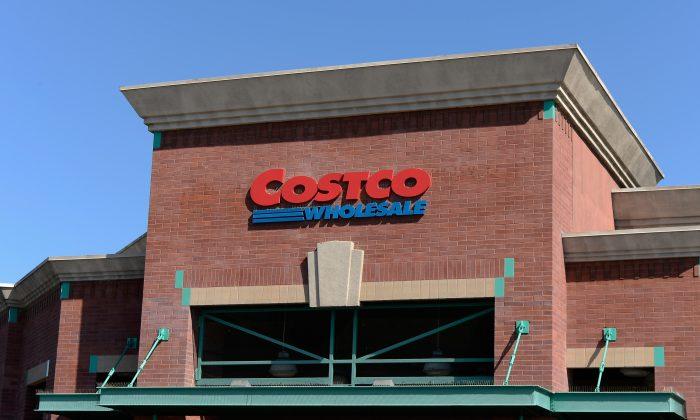Professional investors typically use the S&P 500 Index as a benchmark to measure their portfolio’s investment performance.
As the S&P includes companies operating in all sectors, it is a good proxy to track trends of the overall global economy. But by investing in a few U.S. companies that are uniquely positioned to lead their fields internationally, an investor’s portfolio can have a leg up on the S&P 500 in terms of performance.
Tuning out short-term gains and losses driven by geopolitical and macroeconomic events, stock performance is usually determined by a company’s industry, and its long-term competitive advantages within its industry. Since today’s global marketplace is the most transparent in history, let’s identify a few companies that should have distinct competitive advantages in their global industries for the next 10 to 20 years. These advantages will ensure that their revenues and profits can grow consistently in the long term (exceeding inflation). We know companies like these will, in the medium- and long-term, generate higher returns for shareholders compared to the S&P 500 Index.
In order for a brand to have staying power, a few things must be satisfied:
• The company must be an industry leader; it must be a pioneer in that industry.
• The company must have a competitive advantage over others in the same industry.
• Most importantly, the company must represent something (or have a continuing vision) that consumers will covet long term.
In the global lens, the American way of life is often romanticized and coveted, and this is especially true among people in developing countries where much of the future growth will come from. In this article, we’ll examine three industry-leading companies that can best utilize those ideals to long-term success. Let’s call them the “cultural advantage” portfolio.
There are three companies that obviously fall into this “cultural advantage:” Costco Wholesale Corp., McDonald’s Corp., and Texas Roadhouse Inc.
Growth of Club Stores
Seattle-based Costco (Nasdaq: COST) has a few distinct advantages. The club store concept has taken off globally: big space, lots of brand name choices, members only, and the best prices. In addition, it’s the first name that comes to mind in this sector.
Wal-Mart Stores Inc.’s Sam’s Club brand is a distant No. 2 in term of sales per square foot, compared to Costco. Wal-Mart, however, which has had its share of labor controversies, is almost the opposite of Costco on labor issues, as Costco has a reputation of higher pay, good benefits, and low employee turnover. These factors make it nearly impossible to elevate Sam’s Club’s reputation above that of Costco.
The barrier of entry in this field is almost insurmountable. There is just no real estate space available in many of the ideal markets anymore, and because Costco owns the land and buildings of most of its stores it doesn’t have to worry about rent or real estate price hikes, whereas the cost for any would-be competitor to acquire new land will become prohibitively expensive, in addition to the big disadvantage of lacking scale at the outset. Costco’s recent successes in Japan, Taiwan, and the U.K. have proven its leading status.
Fast Food is King
McDonald’s (NYSE: MCD) is the clear leader in the global fast-food industry and will remain so for a long time because of its valuable real estate holdings (owns nearly 50 percent of its real estate and property). In addition, this industry is here to stay—in economic prosperity or decline. The reason is that as people all over the world spend less time cooking at home, the fast-food industry will likely be an integral part of workers maintaining high productivity rates.
Another big reason is that the global income gap will become wider and wider over time and more middle-class families will shift from fast casual dining to fast food. In addition, people in higher income brackets will maintain their fast-food intake because of convenience and time constraints.
Some other companies have enjoyed success in isolated regions (such as Yum! Brands in China), but because they are not industry leaders (nor do they have the typical McDonald’s association with America), they will not be able to pose a real challenge to McDonald’s in financial terms. Younger upstart brands in this sector can grow to a certain extent, but will not pose a serious challenge to McDonald’s in the long term.
No Messin’ With Texas
Right now, the state of Texas (and its cultural associations) invoke more goodwill from people around the world than the United States as a whole. To many, Texas represents the true American spirit in the eyes of global viewership: the Wild West, the fight with Mexico for freedom, small government, low taxes, oil boom, business friendliness, low housing prices, open roads, and the list goes on.
The restaurant chain Texas Roadhouse (Nasdaq: TXRH), even though it was founded in Louisville, Ky., captures this spirit well. It incorporates the Texas spirit into the entire operation of its restaurants: from the food, music, and drinks, to the way waiters and waitresses dress and dance. Texas Roadhouse not only has tremendous growth opportunity outside the United States, it also has room to grow within the domestic market. This is really a very smart concept.
Culture is the most endearing distinction between countries and the most admired country in the world can always enjoy this advantage.
The American sports culture is also very popular abroad, so athletic apparel and footwear maker Nike Inc. is also a possible candidate. One problem is that in this field, barrier of entry is relatively low, so its advantage over its competitors, such as Adidas AG and relative newcomer Under Armour, may not be permanent.
Warren Song is a contributor to the Epoch Times.





Friends Read Free